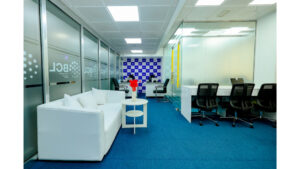Most companies underestimate how expensive a small engineering error can be. People talk about delays, “unexpected adjustments,” and “a bit of rework,” as if they’re minor inconveniences. But once the project rolls into real deadlines, every small oversight turns into a chain of invoices, penalties, and uncomfortable calls with clients. And in most cases, the issue could have been spotted much earlier — if the system had been modeled properly instead of “roughly.”
The Business Impact: Where the Money Actually Disappears
Engineering mistakes are not just technical mishaps. They directly affect cash flow, contracts, and long-term positioning. The losses usually come from three places.
1. Delays That Disrupt Project Flow and Push Costs Up
Most overruns don’t come from huge failures — they come from small issues that interrupt the project flow at the worst possible moment. When a technical detail turns out to be wrong, the schedule doesn’t just “shift a little.” Everything connected to that phase starts sliding:
- equipment sits idle because the team can’t move to the next step,
- specialists wait for clarification or redesign,
- booked installation windows are missed,
- suppliers have to reshuffle deliveries.
Every interrupted sequence triggers extra coordination, rescheduling, and repeated work. By the time the issue is resolved, the project is still intact on paper, but the cost has climbed simply because people and resources were forced to wait.
Most delays of this type are caused by control-related issues that weren’t analyzed deeply enough: an unstable response, a parameter that behaves differently under load, or interactions between components that weren’t modeled together. These things rarely look serious at first — until they stop a full production step or delay integration with another subsystem.
2. Budget Blowouts Caused by “Small Fixes”
Companies rarely plan for overrun. Yet they drift into it year after year because a single error triggers a sequence:
- extra testing,
- emergency engineering hours,
- swapped components,
- revised firmware or control logic,
- repeating the same verification steps twice.
None of this appears in the initial estimate. Even small control issues — oscillations, slow settling, overshoot — cost serious money once physical hardware is involved. Modeling avoids this because you can try ten versions of the same solution in a virtual environment for the cost of one on-site adjustment.
This is why companies that rely on proper control engineering treat it not as tech work, but as financial risk management.
For companies that want to avoid redesigns and control-related delays, practical modeling and stability-verification services — including those available here — help check system behavior early and prevent the budget problems that usually surface later in the process.
3. Reputational Damage and Contract Pressure
Few executives include this in their cost calculations, but it often hurts the most:
- A delayed launch makes partners cautious.
- A shaky demo gives competitors leverage.
- A system that behaves inconsistently becomes a contractual liability.
Reputation doesn’t recover quickly, and every delay plants doubts in the minds of clients who expected reliability. Engineering failures follow companies for years.
Why Control Engineering Matters Financially, Not Just Technically
When people hear “control engineering,” they imagine formulas, PID loops, and sensor noise. But for business the key question is completely different:
How much money do we save by knowing the system’s behavior before we pay to build it?
Accurate modeling answers that question. It shows:
- whether a system is stable,
- where it will fail under stress,
- whether actuators can handle peak loads,
- how heat, vibration, or torque will accumulate,
- what efficiency and energy losses look like,
- which control strategy produces the lowest long-term operating cost.
This is the kind of information CFOs care about — not abstract equations but preventable losses.
Why “We’ll Test It on Site” Is Usually the Expensive Option
Many teams still believe that field testing tells the real story. It does — but at the highest possible price. The moment a malfunction appears on hardware, the company is already paying for it in labor, equipment, logistics, and lost time.
And it’s almost always something that would have surfaced in simulation: a resonance, a timing mismatch, a controller that reacts too aggressively, or a tolerance that seemed harmless on paper.
Ignoring modeling is not efficiency. It’s gambling.
Final Thought
Engineering mistakes drain money long before anyone sees a broken part. They creep in through delays, rework, contract issues, and reputation hits. Proper system modeling and good control engineering don’t eliminate all risks — nothing does — but they turn unpredictable losses into predictable, controllable, and dramatically smaller expenses. And in today’s competitive environment, that difference is often what keeps a project profitable.
Article received via email






























